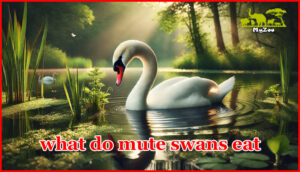
The Spangled Cotinga: Identification, Habitat, and Behavior
The spangled cotinga is one of nature’s most dazzling birds. Its vibrant blue plumage and striking appearance make it a standout in the rainforest. Found in the tropical forests of South America, this bird is a true gem of biodiversity.
A Unique Rainforest Bird
The spangled cotinga (Cotinga cayana) is a medium-sized bird known for its vivid colors. Males display a brilliant turquoise-blue body with contrasting black wings. Females, though less colorful, have a soft grayish-blue hue. This bird is a member of the Cotingidae family, which includes other exotic species.
Purpose of the Article
This article explores the spangled cotinga’s identification, habitat, and behavior. Readers will learn how to spot this bird, where it lives, and how it behaves in the wild. Understanding these aspects helps in appreciating its role in the ecosystem.
Why It Matters
The spangled cotinga is more than just a beautiful bird. It plays a vital role in seed dispersal, aiding forest regeneration. Protecting this species ensures the health of rainforests.
By the end of this article, you’ll know everything about the spangled cotinga. Let’s dive into its fascinating world!
Spangled Cotinga Identification

The spangled cotinga is a stunning bird with distinct features that make it easy to identify. Below, we break down its physical characteristics, distinguishing features, and age or sex variations.
Physical Characteristics
Male Plumage
Male spangled cotingas are a sight to behold. Their bodies are covered in vibrant turquoise-blue feathers. The wings are black with small, shiny “spangles” that glimmer in the sunlight. These spangles give the bird its name.
Female Plumage
Females are less colorful but equally elegant. They have a soft grayish-blue body with subtle white markings. Their wings also feature the same spangles, though less pronounced than in males.
Size and Shape
The spangled cotinga is a medium-sized bird, measuring about 7-8 inches in length. It has a compact, rounded body with a short tail and a small, curved beak.
Distinguishing Features
Comparison to Similar Species
The spangled cotinga is often confused with other cotinga species, like the purple-breasted cotinga. However, the spangled cotinga’s bright blue color and spangled wings set it apart.
Unique Features
Its beak is short and slightly hooked, perfect for eating fruit. The eyes are dark and surrounded by a small patch of bare skin, adding to its unique look.
Age and Sex Variations
Juvenile Plumage
Juvenile spangled cotingas resemble females but are duller in color. Their spangles are less noticeable, and their overall appearance is more muted.
Differentiating Males and Females
Males are easily identified by their bright blue color and bold spangles. Females and juveniles are grayer with softer markings. Observing these differences helps in accurate identification.
Visual Aids
To make identification easier, refer to the images below:
- Male Spangled Cotinga: Vibrant blue body with black, spangled wings.
- Female Spangled Cotinga: Grayish-blue body with subtle spangles.
- Juvenile Spangled Cotinga: Duller version of the female.
Habitat and Distribution
The spangled cotinga is a bird deeply tied to the lush rainforests of South America. Understanding its habitat and distribution helps us appreciate its ecological importance and the challenges it faces.
Geographical Range
The spangled cotinga is found in the tropical regions of South America. Its range includes countries like Brazil, Venezuela, Colombia, Ecuador, Peru, and Bolivia. It thrives in the Amazon Basin and other lowland rainforests.
Preferred Habitats
Forest Types
This bird prefers dense, humid rainforests with tall trees. It is often found in both primary and secondary forests. These forests provide the food and shelter it needs to survive.
Canopy and Sub-Canopy Levels
The spangled cotinga spends most of its time in the canopy and sub-canopy layers. These areas are rich in fruit-bearing trees, which are its primary food source. It rarely descends to the forest floor.
Elevation
The spangled cotinga is typically found at low to mid-elevations, usually below 1,000 meters. It avoids higher altitudes, where the climate and vegetation are less suitable.
Ecological Role
Seed Dispersal
The spangled cotinga plays a crucial role in seed dispersal. By eating fruits and excreting seeds, it helps maintain the forest’s biodiversity. This process supports the growth of new trees and plants.
Food Chain
As a frugivore, the spangled cotinga is an important part of the rainforest food chain. It provides food for predators like hawks and snakes, contributing to the ecosystem’s balance.
Conservation Concerns
Habitat Loss
The biggest threat to the spangled cotinga is habitat loss. Deforestation for agriculture, logging, and urban development is shrinking its natural habitat. This reduces its food sources and nesting sites.
Other Threats
Other threats include climate change and illegal wildlife trade. These factors further endanger the species and disrupt its ecological role.
(Optional: Include a map showing the spangled cotinga’s geographical range and a chart highlighting its preferred habitat layers.)
Protecting the spangled cotinga means preserving the rainforests it calls home. Conservation efforts are essential to ensure this stunning bird continues to thrive.
Spangled Cotinga Behavior
The spangled cotinga is not only a visual marvel but also a fascinating bird in terms of behavior. From feeding habits to courtship rituals, its actions reveal a complex and intriguing lifestyle.
Feeding Habits
Diet
The spangled cotinga is primarily frugivorous, meaning it feeds on fruits. It enjoys a variety of berries, figs, and other small fruits. Occasionally, it supplements its diet with insects, especially during the breeding season.
Foraging
This bird forages in the canopy and sub-canopy layers of the rainforest. It uses its sharp eyesight to spot ripe fruits. The spangled cotinga often perches quietly, waiting for the right moment to pluck its food. It rarely forages on the ground, preferring the safety of the trees.
Vocalizations
Songs and Calls
The spangled cotinga is not known for complex songs. Instead, it produces simple, high-pitched calls. These calls are often short and repetitive, serving as communication tools.
Purpose of Vocalizations
Vocalizations are used for various purposes, including attracting mates and signaling alarm. Males may call to establish territory or to communicate with females during courtship.
Courtship and Breeding
Courtship Displays
Male spangled cotingas perform elaborate courtship displays to attract females. These displays often involve fluffing their feathers, hopping between branches, and showing off their vibrant plumage.
Mating Rituals
During mating season, males gather in groups called leks. They compete for the attention of females by displaying their bright colors and performing aerial acrobatics. Females choose the most impressive males for mating.
Nest Building and Parental Care
The female builds the nest, usually a small, shallow cup made of twigs and leaves. She lays 1-2 eggs and incubates them alone. Both parents may feed the chicks, but the female does most of the care.
Leks
Leks are communal display areas where males gather to attract females. These gatherings are crucial for mating success and are a key part of the spangled cotinga’s breeding behavior.
Social Behavior
Interactions with Other Birds
The spangled cotinga is generally solitary or found in pairs. However, during the breeding season, males gather in leks. They are not highly social outside of these gatherings.
Territorial Behavior
Males are territorial during the breeding season. They defend their display areas within the lek from rival males. Outside of this period, they are less aggressive.
Daily Activities
Typical Day
A typical day for a spangled cotinga involves foraging for food, resting, and preening. They are most active during the early morning and late afternoon.
Resting and Preening
After feeding, the spangled cotinga spends time resting on high branches. Preening is an essential activity to maintain their vibrant plumage. This helps remove parasites and keep their feathers in top condition.
Here’s a simple chart to visually represent the spangled cotinga’s daily activity cycle and behavior during breeding and non-breeding seasons. This chart is designed to be easy to understand and visually engaging.
Spangled Cotinga Daily Activity Cycle
| Time of Day | Activity | Details |
|---|---|---|
| Early Morning | Foraging | Searches for fruits and insects in the canopy. |
| Mid-Morning | Resting | Perches quietly on high branches to digest food. |
| Late Morning | Preening | Cleans and maintains feathers to remove parasites. |
| Afternoon | Foraging | Resumes feeding, often in the sub-canopy layer. |
| Late Afternoon | Courtship Displays (Breeding Season) | Males perform displays in leks to attract females. |
| Evening | Resting | Settles in a safe, high perch to sleep for the night. |
Spangled Cotinga Behavior: Breeding vs. Non-Breeding Seasons
| Behavior | Breeding Season | Non-Breeding Season |
|---|---|---|
| Social Interaction | Males gather in leks; competitive displays. | Solitary or in pairs; less social. |
| Vocalizations | Frequent calls to attract mates. | Occasional calls for communication. |
| Feeding Habits | Eats more insects for protein. | Primarily frugivorous; focuses on fruits. |
| Territoriality | Highly territorial in leks. | Less aggressive; no strong territoriality. |
| Activity Level | High energy; frequent displays. | Calmer; focuses on foraging and resting. |
This chart provides a quick overview of the spangled cotinga’s behavior and daily routines. It highlights key differences between breeding and non-breeding seasons, making it easier to understand the bird’s lifestyle.
Here’s the updated chart with icons to visually represent the spangled cotinga’s daily activities and behavior. The icons make the chart more engaging and easier to understand at a glance.
Spangled Cotinga Daily Activity Cycle
| Time of Day | Activity | Icon | Details |
|---|---|---|---|
| Early Morning | Foraging | 🍇 | Searches for fruits and insects in the canopy. |
| Mid-Morning | Resting | 🌳 | Perches quietly on high branches to digest food. |
| Late Morning | Preening | 🪶 | Cleans and maintains feathers to remove parasites. |
| Afternoon | Foraging | 🍒 | Resumes feeding, often in the sub-canopy layer. |
| Late Afternoon | Courtship Displays (Breeding Season) | 💃 | Males perform displays in leks to attract females. |
| Evening | Resting | 🌙 | Settles in a safe, high perch to sleep for the night. |
Spangled Cotinga Behavior: Breeding vs. Non-Breeding Seasons
| Behavior | Breeding Season | Non-Breeding Season | Icon |
|---|---|---|---|
| Social Interaction | Males gather in leks; competitive displays. | Solitary or in pairs; less social. | 🕊️ |
| Vocalizations | Frequent calls to attract mates. | Occasional calls for communication. | 🎵 |
| Feeding Habits | Eats more insects for protein. | Primarily frugivorous; focuses on fruits. | 🐛🍇 |
| Territoriality | Highly territorial in leks. | Less aggressive; no strong territoriality. | 🚫 |
| Activity Level | High energy; frequent displays. | Calmer; focuses on foraging and resting. | ⚡😴 |
Icons Key
- 🍇 = Foraging (fruits)
- 🌳 = Resting
- 🪶 = Preening
- 🍒 = Foraging (insects)
- 💃 = Courtship displays
- 🌙 = Sleeping
- 🕊️ = Social interaction
- 🎵 = Vocalizations
- 🐛 = Insects (protein)
- 🚫 = Territorial behavior
- ⚡ = High energy
- 😴 = Resting
This visually enhanced chart uses icons to represent activities and behaviors, making it more engaging and easier to understand. It’s perfect for readers who prefer quick, visual summaries!
Conservation Status and Efforts
The spangled cotinga is a symbol of the beauty and fragility of rainforest ecosystems. However, its survival is under threat due to human activities.
Current Status
The spangled cotinga is currently listed as Least Concern by the IUCN. However, this status masks the growing threats it faces. Deforestation and habitat destruction are the primary dangers. Rainforests in South America are being cleared for agriculture, logging, and urban development. This reduces the bird’s food sources and nesting sites, putting its future at risk.
Conservation Efforts
Several organizations are working to protect the spangled cotinga and its habitat. Groups like the Rainforest Trust and World Wildlife Fund (WWF) focus on preserving rainforests and promoting sustainable practices. Reforestation projects and protected areas are key solutions to safeguard this species.
Call to Action
You can help protect the spangled cotinga by supporting conservation organizations. Donations, volunteering, and spreading awareness make a difference. Preserving rainforests is not just about saving one species—it’s about protecting the entire ecosystem.
Together, we can ensure the spangled cotinga continues to thrive in its natural habitat. Let’s act now to save this stunning bird and the rainforests it calls home!
Conclusion
The spangled cotinga is a true marvel of the rainforest, with its vibrant plumage, fascinating behavior, and vital ecological role. From its striking appearance to its importance in seed dispersal, this bird is a symbol of the beauty and complexity of nature.
However, deforestation and habitat loss threaten its survival. By understanding and appreciating the spangled cotinga, we can take steps to protect it and its habitat. Let’s cherish this unique species and work together to ensure it continues to brighten the rainforests for generations to come. Protecting the spangled cotinga means preserving the heart of the rainforest itself.


One thought on “The Spangled Cotinga: Identification, Habitat, and Behavior”
Comments are closed.